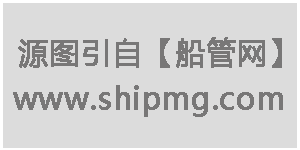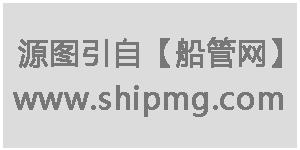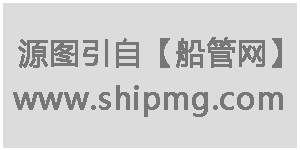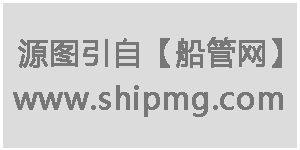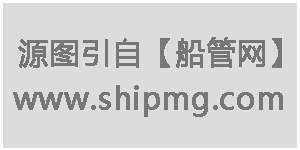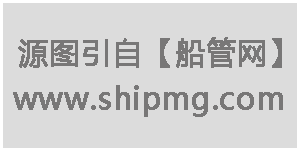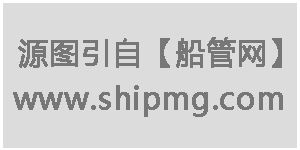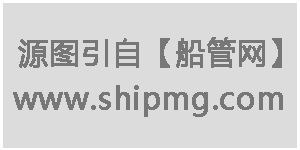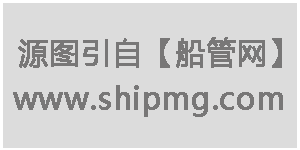内容提示:当船舶装运硝酸铵、硝酸基化肥时可以参考本文给予船长必要的提醒:包括装货前、装货中、及运输途中和卸货等的注意事项。此外本文引用了IMO发布CCC.1/Circ.4-载运硝酸铵基化肥(无危险的)通函...
预留广告位620x60
【免费使用】点击查看详情
【免费使用】点击查看详情
该类化肥分为A类、B类、C类,其中C类为无危险性,而另外两类则具有很强的危险性,在5.1类---氧化物质,联合国编码为:2067至2072,其货物性质为:全部或部分溶解入水,有助燃性,熔点为160℃左右,当温度达到210℃时开始分解,释放出CO后于空气接触生成CO2并冒黄烟,同时散发出毒气及助燃气体,当货物受到油类污染时或在密闭的舱室里会发生爆炸危险。
1.装货前的注意事项:
1)认真学习《国际危规》中有关规定,并严格执行。
2)货舱要做到清洁、干燥无任何杂物,只许使用非易燃品做防护材料及少量的木板隔垫机舱或日用油柜,以防止燃油加热使货物遇高温分解发生危险。
3)货舱温度不超过40℃。
4)货舱下面的油舱人孔盖及有关管系保证没有任何渗漏。
5)所有通向货舱的供电线路都应从货舱外切断电源。禁止电焊、烧割及其他明火作业。
2.装货时注意事项:
1)装货时禁止在甲板上或货舱里吸烟,并悬挂禁烟告示牌。
2)在货舱及其附近禁止电气焊等明火作业。
3)一旦失火不用蒸汽或惰性气体救火,必须用大量的水来灭火,故必须备好消防水,救火时应戴有自供式呼吸器,在整个运输过程中,甲板上准备数根皮龙并接在消防拴上,检查好消防泵,保证能迅速投入灭火使用。
4)由于灭火时需要大量水,应考虑到船舶的稳性。
3. 航行途中注意事项
1)注意与货舱相邻的油柜,加热时应慢慢加温,防止货舱急剧升温。
2)保持所有泻水孔畅通,装货后用封舱胶带将货舱密封,防止雨湿。
3)中途禁止驳卸和加装燃油。
4.卸货注意事项与装货一样,如发现问题要对货物拍照,并将情况记入航海日志,及时向公司报告。
----------------
此外,下文引用:IMO发布CCC.1/Circ.4-载运硝酸铵基化肥(无危险的)通函
对于载运硝酸铵基化肥(无危险的)的提醒注意
通函正文(中文版):
1. 2017年9月11日-15日,CCC分委会在其第4次会议上审议了关于载运硝酸铵基化肥(无危 险的)的相关事项。
2. 在《国际海运固体散装货物规则》(IMSBC规则)中,硝酸铵基化肥(无危险的)被划 分为C组货物。关于这一点,分委会注意到“MV紫色海滩(2015)”和“MV柴郡(英国一郡名) (2017)”事故与载运硝酸铵基化肥(无危险的)之间的关系。分委会同时注意到事故的调查 报告还处于等待期间,为了确保安全载运需要进一步检查该货物的特性,并对其相关风险进 行提醒。
3.根据欧洲化肥组织发布的硝酸铵基化肥海上运输指南,该货物的安全载运原则如下:
.1 避免硝酸铵基化肥与易燃物质进行相邻储存;
.2 避免硝酸铵基化肥与不相容物质进行相邻储存;
.3 避免之前载运的货物残留物对硝酸铵基化肥造成污染;
.4 避免硝酸铵基化肥的残留物对后续载运的货物造成污染;
.5 避免热源对硝酸铵基化肥产生影响;和
.6 避免对含有的硝酸铵基化肥的受限空间进行动火(如焊接)。
4.虽然硝酸铵基化肥(无危险的)被归类为C组货物,但现行IMSBC规则附录1明细表对其 所列的相关措施应谨慎使用。某些化肥类货物虽然已通过规定的试验,但其仍具有潜在的分 解特性。
5.上述事故产生了大量的气体云,足以包围整艘船舶,且覆盖了船舶周围的海域。散发的 蒸气具有很强的毒性。这些条件可能会影响船舶安全撤离,并且阻碍救援和消防。在该类事 件中,货物分解可能持续许多天,货舱内的温度可能超过500℃。
6.对于船员最好的防护是认识到货物的分解过程可以在早期被发现。整个航程的货物定期 监测,对于探测早期分解是至关重要的。
7.当被强烈加热时,货物可能分解并释放有毒气体。货舱舱口盖的及时打开能预防压力积 聚,并帮助冷却货物,阻止货物分解的发展。
8. 如果该货物发生分解或火灾:
.1 提供最大量的通风,以驱除由于分解造成的气体。这些气体可能包括有毒氨气、氮氧化物和硫氧化物;
.2 必要时穿戴防护服和自给式呼吸器;
.3 当使用喷射管传输水至热点时,水的使用是最有效的。使用水雾可能不足以控制分 解;
.4 可考虑货舱淹水,并兼顾考虑船舶稳性和结构强度;和
.5 船舶的气体消防装置将会失效。
9.考虑到相关IMO文件的规定和有关处理及散装运输硝酸铵基化肥(无危险的)的上述信 息,提请各成员国使托运人、码头经营人、船东、船舶经营人、租船人、船长和所有其他相 关方注意到上述信息,并要求引起重视和采取适当的行动。
通函正文(英文版):
CCC.1/Circ.4
22 September 2017
CARRIAGE OF AMMONIUM NITRATE BASED FERTILIZER (non-hazardous)
1 The Sub-Committee on Carriage of Cargoes and Containers (CCC), at its fourth session (11 to 15 September 2017), considered matters related to the carriage of AMMONIUM NITRATE BASED FERTILIZER (non-hazardous).
2 AMMONIUM NITRATE BASED FERTILIZER (non-hazardous) is described as a Group C cargo in the International Maritime Solid Bulk Cargoes (IMSBC) Code. In this connection, the Sub-Committee noted the accidents involving the MV Purple Beach (2015) and MV Cheshire (2017) and the carriage of AMMONIUM NITRATE BASED FERTILIZER (non-hazardous). The Sub-Committee also noted that the accident investigation reports were pending and the need for further examination of the properties of this cargo was raised in order to ensure its safe carriage and to address awareness of the risks.
3 According to the Guidance for sea transport of AMMONIUM NITRATE BASED FERTILIZERS by the Organization Fertilizers Europe*, the safety principles for this cargo are as follows:
.1 avoidance of storage of combustible substances near fertilizers;
.2 avoidance of storage of incompatible substances near fertilizers;
.3 avoidance of cross contamination with remains of previous cargoes;
.4 avoidance of cross contamination of next cargo with fertilizer;
.5 avoidance of sources of heat likely to affect the fertilizer; and
.6 avoidance of application of heat (e.g. welding) to any section which may have trapped/confined fertilizer.
4 The measures listed in the individual schedule for AMMONIUM NITRATE BASED FERTILIZER (non-hazardous) in appendix 1 of the current IMSBC Code should be applied carefully even though it is classified as Group C. Some fertilizers which have passed the prescribed tests have shown the potential to still undergo decomposition.
5 The gas clouds produced during the aforementioned accidents were large enough to envelop the ship, and cover the sea area surrounding the ship. The vapour emitted was highly toxic. Such conditions could affect the safe abandonment of the ship and hinder rescue and firefighting efforts. In such events, cargo decomposition may last for multiple days and the temperatures in cargo holds may reach in excess of 500oC.
6 The best protection for seafarers is awareness of the decomposition process to allow it to be identified at an early stage. Regular monitoring of the cargo throughout the voyage is crucial to detect beginning of decomposition.
7 When heated strongly, this cargo may decompose and release toxic gases. Timely opening of cargo hatches can prevent the build-up of pressure and help cool the cargo, impeding the development of cargo decomposition.
8 In case of decomposition or fire involving this cargo:
.1 provide maximum ventilation to remove the gases resulting from decomposition. These gases may include toxic fumes of ammonia and oxides of nitrogen and sulphur;
.2 wear, as necessary, protective clothing and self-contained breathing apparatus;
.3 application of water is most effective where injection pipes are used to deliver water to hot spots. Water spraying may not be sufficient to control the decomposition;
.4 flooding of the cargo space may be considered, giving due consideration to the ship's stability and structural strength; and
.5 the ship's gas firefighting installation will be ineffective.
9 Member States are invited to bring the above information to the attention of shippers, terminal operators, shipowners, ship operators, charterers, shipmasters and all other entities concerned, requesting that extreme care and appropriate action be taken, taking into account the provisions of relevant IMO instruments and the information above when handling and carrying AMMONIUM NITRATE BASED FERTILIZER (non-hazardous) in bulk.

